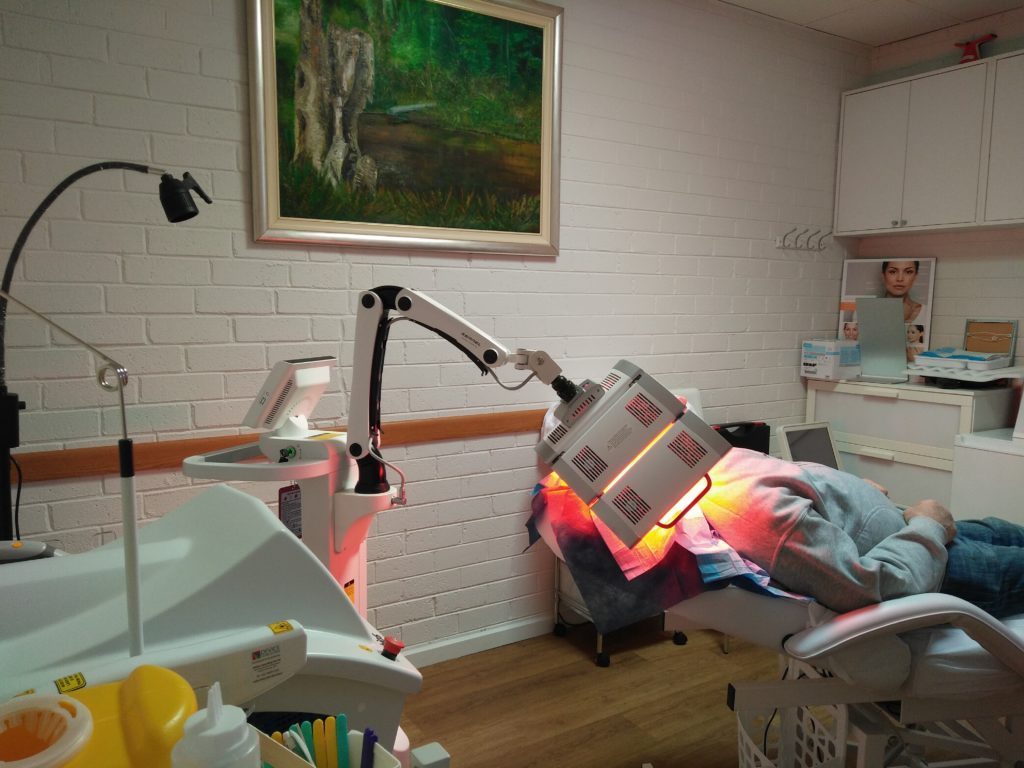Photodynamic therapy is a treatment for various skin conditions including skin cancers. It requires a combination of a medication and the application of energy to create a chemical reaction that targets certain growths or skin conditions. The medication is applied usually in a cream formulation and the energy is obtained from a strong light source.
Photodynamic therapy is most commonly used for superficial skin cancers and actinic (solar) keratoses (sun spots), especially, where there is a requirement to cover large areas of skin, like full face, scalp and chest.
The Procedure

If you are booked for the Photodynamic Therapy (PDT)session, you will be provided with the pre-treatment pack which you will need to apply to the skin treatment area as per instructions provided with the pack as the 7-day course prior to your session date.
On the day of the session, the treatment areas are marked out by Dr Gabriel Poboran. The surface is gently scraped to remove any scaliness or crusting. This is sometimes mildly painful and may bleed. A special cream is then applied to the lesion which might be covered with a dressing. This is left intact for up to 3 hours.
The dressing is then removed and any residual cream cleaned from the treated area. A bright light source (LED) is then applied onto the lesion and held for approximately 10-20 minutes. The light is very bright and protective glasses should be worn. Subsequently the lesion is cleaned and dressed again.
The dressing should be kept intact for at least 24 hours and the area protected from sunlight. The treatment for skin cancers is usually repeated again in one to three weeks.
You will receive our written day by day instruction on how to manage and look after your treated areas. Post treatment pack will be provided for the 7-day management program.
What to Expect
 During treatment, discomfort at the treatment site is common but not severe. This may include burning, stinging or tenderness. The treatment can be stopped if necessary to provide pain relief such as a local anaesthetic. The discomfort generally ceases quickly when the light is switched off but occasionally can persist. Some redness, itching, swelling and crusting is expected after the procedure but generally will subside after a few days. In some cases the skin may become lighter or darker in colour. Increased skin colour generally fades over months but decreased skin colour can occasionally be permanent.
During treatment, discomfort at the treatment site is common but not severe. This may include burning, stinging or tenderness. The treatment can be stopped if necessary to provide pain relief such as a local anaesthetic. The discomfort generally ceases quickly when the light is switched off but occasionally can persist. Some redness, itching, swelling and crusting is expected after the procedure but generally will subside after a few days. In some cases the skin may become lighter or darker in colour. Increased skin colour generally fades over months but decreased skin colour can occasionally be permanent.
Rare side effects have been reported including: anxiety, headaches, dizziness, migraines, thinning of the skin, widespread skin rashes, abnormal production of tears, nausea, tiredness, influenza-like symptoms and skin infections.
